How to Plant Apricots: Key Steps for Fruitful Trees
- April 8, 2024
- 0 comment
Discover the joys of growing your own apricots with our comprehensive guide. Learn the essential steps for planting and nurturing apricot trees, and enjoy the sweet rewards of these nutritious, flavor-packed fruits. Ideal for gardeners of all levels, this article provides insights into cultivating apricots successfully for bountiful harvests and health benefits.
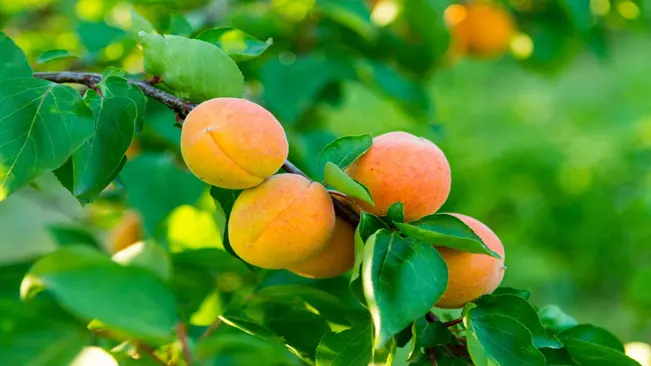
| Benefit | Description |
|---|---|
| Nutritional Value | Apricots are low in calories and fat while being a source of fiber, vitamins, and minerals. |
| High in Antioxidants | Apricots contain various antioxidants, including beta carotene and vitamins A, C, and E. |
| Eye Health | Beta carotene, lutein, and zeaxanthin in apricots contribute to protecting and improving vision. |
| Skin Health | The vitamins and minerals in apricots can promote healthy skin and help in skin repair. |
| Heart Health | The fiber and potassium in apricots can aid in maintaining a healthy heart and lowering blood pressure. |
| Gut Health | Dietary fiber in apricots helps improve digestion and can aid in preventing constipation. |
| Immune System Support | The rich vitamin C content boosts the immune system and can help ward off illnesses. |
| Bone Health | Apricots contain calcium, potassium, and other minerals essential for bone health. |
| Anemia Prevention | The iron and copper in apricots play a role in the formation of hemoglobin, aiding in preventing anemia. |
| Anti-Inflammatory | Certain compounds in apricots have anti-inflammatory properties that may reduce inflammation. |
List on How To Plant Apricots
- Choosing the Right Variety
- Location and Soil
- Planting Time
- Planting Process
- Watering and Mulching
- Fertilizing
- Pruning
- Pest and Disease Management
- Harvesting
Choosing the Right Variety
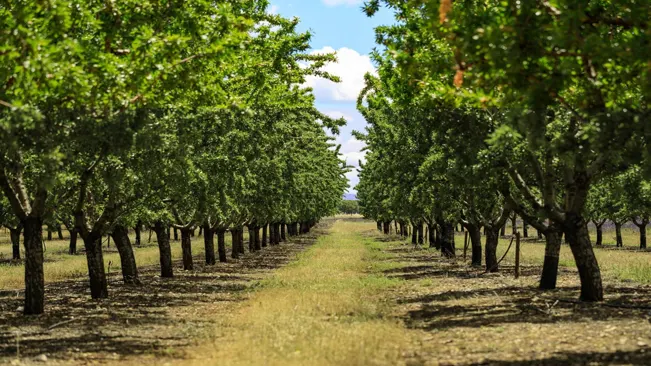
Understanding Climate Requirements
- Chilling Hours: Apricots need a certain number of chilling hours (hours of cold temperatures typically below 45 degrees Fahrenheit) during the winter to produce fruit. This requirement varies between different apricot varieties. Some need longer cold periods, while others are bred for milder climates with fewer chilling hours.
- Heat Tolerance: Some apricot varieties can tolerate high summer temperatures better than others. This is particularly important in regions with very hot summers.
Variety Selection
- Local Varieties: Often, the best choices are the varieties that are already growing successfully in your area. These have proven to adapt well to your specific climate and soil conditions.
- Early vs. Late Varieties: Early varieties bloom and ripen sooner, which can be advantageous in areas with shorter growing seasons. However, they are also more susceptible to late spring frosts. Late varieties, on the other hand, can escape late frosts but might not ripen adequately in cooler climates.
Consult Local Resources
- Nurseries and Garden Centers: Local nurseries often stock varieties that perform well in your region. They can provide valuable advice based on your local climate and soil.
- Agricultural Extension Services: These services can provide detailed information on the best varieties for your area, as well as other tips for growing apricots. They often have resources like planting guides, workshops, and expert advice.
Consider Your Needs
- Taste and Use: Different varieties of apricots vary in taste, texture, and use. Some are better for fresh eating, while others are ideal for drying or canning.
- Tree Size: Consider the size of the mature tree. Dwarf and semi-dwarf varieties are available for smaller spaces.
Location and Soil
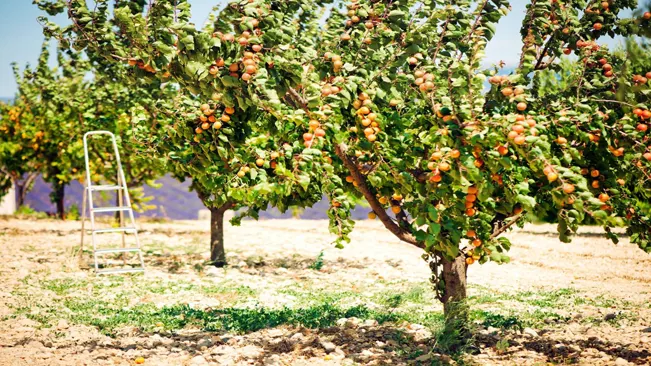
Location
- Sunlight: Apricot trees are sun-loving plants and require full sun to produce the best fruit. A location that provides at least six hours of direct sunlight is crucial. The sunlight not only aids in fruit development but also helps in preventing various fungal diseases by keeping the foliage dry.
- Air Circulation: Good air circulation is also vital. A breezy location can reduce the likelihood of fungal infections like powdery mildew. However, avoid overly windy spots which might damage the tree or its fruit.
- Protection: It’s beneficial to plant apricot trees in a spot that is sheltered from harsh winds and frost pockets. Spring frosts can damage blossoms, impacting fruit production.
Soil
- Drainage: Apricots do not like to have ‘wet feet’. Well-draining soil is essential to prevent root rot. If natural drainage is poor, raised beds can be a great solution.
- Soil pH: The ideal pH range of 6.0 to 7.5 is slightly acidic to neutral. If the soil is too acidic or alkaline, it can be adjusted with lime or sulfur, respectively. Testing your soil pH can guide this process.
- Soil Composition: If the soil is too dense, like clay, amending it with organic matter such as compost or aged manure can improve its structure and nutrient content. For sandy soils, organic matter can help retain moisture and nutrients.
- Nutrient Content: While apricots are not overly demanding in terms of nutrients, they do benefit from a soil rich in organic matter. A balanced nutrient environment supports healthy growth and fruiting.
Planting Time
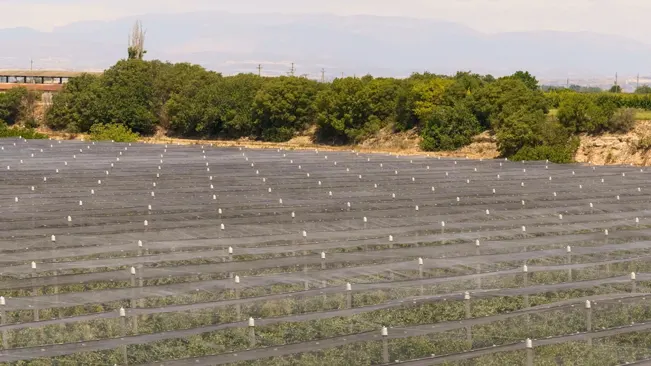
- Dormant Season Advantage: In late winter or early spring, apricot trees are typically dormant. Planting during this time minimizes stress on the tree, as it’s not actively growing or bearing fruit.
- Root Establishment: Planting in late winter or early spring gives the tree a chance to establish its root system before the onset of warmer temperatures and the growing season. A well-established root system is critical for absorbing nutrients and water during the growing season.
- Avoiding Frost Damage: Although apricots are relatively cold-hardy, their blossoms are susceptible to late spring frosts. Planting early allows trees to acclimate to their new environment and can help in timing their bloom after the last frost date, reducing the risk of frost damage to blossoms.
- Soil Conditions: During late winter or early spring, the soil is often in ideal condition for planting. It’s no longer frozen but has started to dry out from the winter wetness, making it easier to work with and ideal for new roots to penetrate.
- Early Growth Stimulation: As the weather warms, the increase in soil temperature stimulates new root growth. This natural cycle helps the tree to establish more effectively compared to planting in other seasons.
- Seasonal Rainfall: Spring often brings more consistent rainfall, which can help newly planted trees maintain the moisture levels they need to grow without requiring extensive supplemental watering.
Planting Process
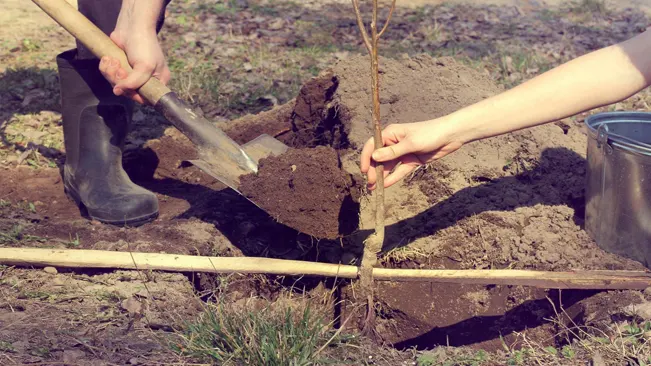
- Digging the Hole
- The first step is crucial as it sets the foundation for your apricot tree’s growth. The reason for digging a hole twice as wide as the root ball is to loosen the surrounding soil. This extra space makes it easier for the roots to expand and grow into the surrounding soil, which is essential for the tree’s stability and nutrient absorption.
- The depth of the hole should be just as deep as the root ball to prevent the tree from being planted too deep, which can cause stem rot or growth issues.
- Positioning the Tree
- When placing the tree in the hole, it’s vital to ensure that the top of the root ball is level with the ground. Planting the tree either too deep or too shallow can stress the tree and affect its growth and fruit production.
- It’s also important to gently straighten out any circling roots before planting, as these can eventually strangle the tree as it grows.
- Backfilling
- Filling the hole back in with soil and tamping it down removes air pockets which could otherwise dry out the roots.
- It’s usually recommended to use the same soil that was removed from the hole rather than a different soil or soil amendment, as this can encourage the roots to grow out into the native soil and establish a strong root system.
Watering and Mulching
Watering Apricot Trees

- Initial Watering: After planting an apricot tree, it’s crucial to water it thoroughly to settle the soil and eliminate air pockets around the roots.
- Regular Watering Schedule: In the first few years, consistent watering is vital for developing a strong root system. The frequency depends on your climate and soil type. In general, water once a week, allowing the soil to dry out slightly between waterings.
- Monitoring Soil Moisture: The goal is to maintain a balance where the soil is moist, but not saturated. Over-watering can lead to root rot and other issues. Use a soil moisture meter or check the soil manually by digging a small hole near the tree to feel for moisture.
- Watering Mature Trees: Once established, apricot trees are somewhat drought-tolerant. However, they still benefit from occasional deep watering, especially during dry spells.
- Seasonal Adjustments: Reduce watering in the fall to prepare the tree for winter, and increase it again in the spring as the growing season begins.
Mulching Apricot Trees
- Purpose of Mulching: Mulch helps to retain soil moisture, regulate soil temperature, and suppress weed growth. It also contributes to soil health as it breaks down.
- Choosing Mulch: Organic mulches like wood chips, straw, or compost are ideal. They not only retain moisture but also enrich the soil as they decompose.
- Application: Spread a layer of mulch around the base of the tree, extending out to the drip line (the edge of the tree’s canopy). The layer should be about 2 to 4 inches thick.
- Avoiding the Trunk: Keep the mulch a few inches away from the trunk to prevent moisture accumulation against the bark, which can cause rot and invite pests.
- Refreshing Mulch: Replenish the mulch layer as needed, typically once a year, to maintain its effectiveness.
Fertilizing
Understanding Fertilizer
- Balanced Fertilizer: For apricot trees, a balanced fertilizer typically means one that has equal or nearly equal parts of nitrogen (N), phosphorus (P), and potassium (K), often labeled as N-P-K. A common formula might be 10-10-10 or 12-12-12.
- Fruit Tree Formulations: There are fertilizers specifically formulated for fruit trees. These may include additional micronutrients beneficial for apricots.
Timing of Fertilization
- Early Spring Application: Fertilizing in early spring, just before the onset of new growth, is crucial. This timing ensures that the nutrients are available when the tree starts its active growing phase.
Method of Application
- Soil Application: Granular fertilizers are commonly applied directly to the soil. It’s important to spread the fertilizer evenly around the tree, starting a few inches from the trunk and going out to the drip line (the area directly under the outer circumference of the tree branches).
- Depth: Avoid applying fertilizer too close to the tree trunk to prevent root burn. It should be sprinkled on the soil surface or lightly mixed into the topsoil.
- Watering: After applying fertilizer, water the tree thoroughly. This helps in dissolving the fertilizer and carrying its nutrients down to the tree’s roots.
Pruning
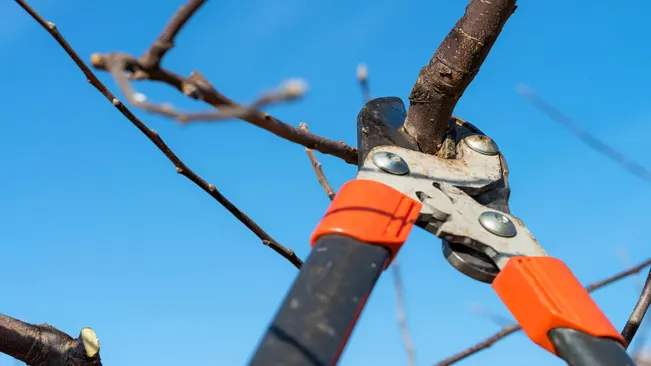
Why Pruning is Important
- Fruit Production: Pruning helps in directing the tree’s energy towards producing quality fruit. Without pruning, the tree might spend more energy on wood growth rather than on fruit production.
- Tree Health: Removing dead or diseased branches prevents the spread of disease and pests.
- Air Circulation and Sunlight Penetration: Pruning opens up the canopy of the tree, allowing for better air circulation and sunlight exposure, which are essential for the health of the tree and the ripening of fruit.
- Shape and Size Management: Regular pruning keeps the tree at a manageable size and maintains a good structure, making harvesting easier and preventing potential damage from overgrown branches.
How to Prune Apricot Trees
- Timing: The best time to prune apricot trees is in late winter or early spring before the sap starts to flow and new growth begins. This timing helps in healing the cuts faster and reduces the risk of disease infection.
- Tools: Use sharp, clean pruning tools. This includes hand pruners for small branches and loppers or a pruning saw for larger branches.
- Technique:
- Start by removing all dead, damaged, and diseased wood.
- Cut back any branches that are crossing or rubbing against each other.
- Thin out the center of the tree to allow light and air to penetrate.
- Cut back branches to shape the tree and control its size.
- Make your cuts at a 45-degree angle about 1/4 inch above a bud facing the outside of the tree. This encourages outward growth.
Pest and Disease Management
Aphids
- Description: Small, soft-bodied insects that can be green, yellow, brown, red, or black. They suck sap from the leaves and stems, causing leaf curl and stunted growth.
- Management: Natural predators like ladybugs can help. You can also use insecticidal soaps or neem oil. In severe cases, more potent insecticides might be necessary.
Brown Rot
- Description: A fungal disease that affects the fruit, blossoms, and branches, causing brown, rotting fruit and cankers on the wood.
- Management: Prune and destroy infected parts, improve air circulation, and avoid overhead watering. Fungicides can be effective, especially when applied as flowers open.
Bacterial Canker
- Description: Caused by bacteria, this disease leads to cankers on branches and trunks, gum exudation, leaf spots, and dieback.
- Management: Prune out infected parts during dry weather. Apply copper-based fungicides in fall and before bud break in spring. Good cultural practices and tree vigor are important for prevention.
Harvesting
The exact time for harvesting apricots can vary depending on the local climate and the specific variety of the apricot tree. In general, the harvest season falls in late spring to early summer. Monitoring the fruit regularly as the season progresses is key to determining the right time to harvest.
Indicators of Ripeness
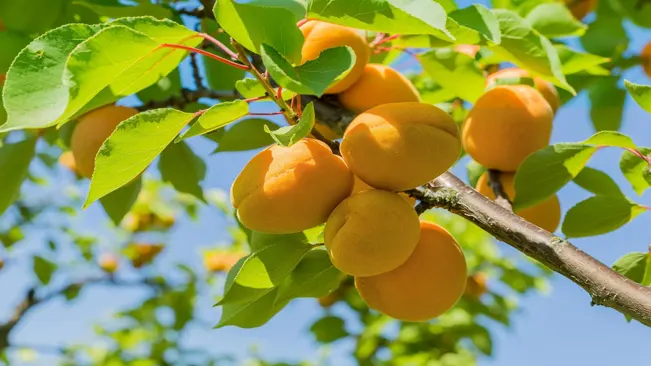
- Apricots should be harvested when they are fully ripe for the best flavor and sweetness. Indicators of ripeness include a rich, golden-orange color (depending on the variety), a slightly soft texture, and a sweet fragrance. The fruit should feel slightly soft when gently squeezed, but not mushy.
Method of Harvesting
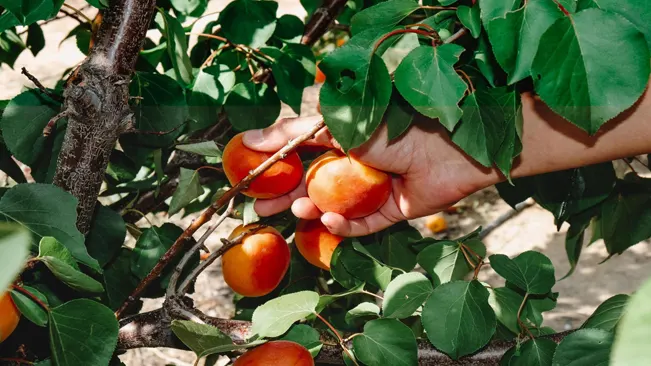
- To harvest apricots, it’s recommended to gently twist the fruit off the branch. This method minimizes harm to both the fruit and the tree. Alternatively, you can use pruning shears to snip the fruit off, making sure to leave the stem attached to the tree. This approach is particularly useful if the fruit is in a hard-to-reach spot.
Handling After Harvest
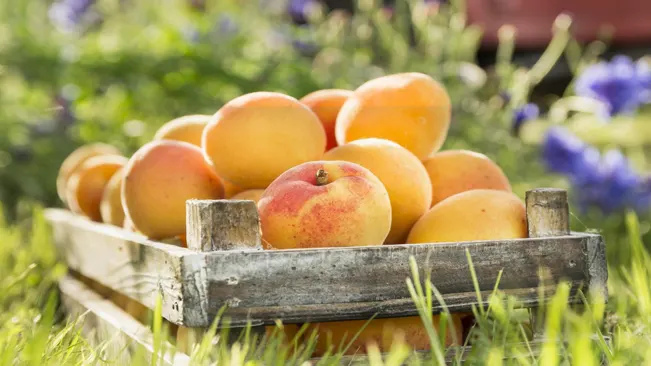
- Apricots are delicate and can bruise easily. Handle them with care during and after harvesting. It’s best to place them gently in a basket or container rather than tossing them in.
Storage
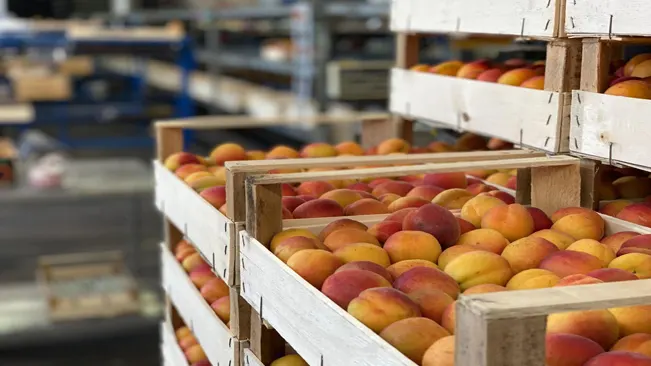
- Freshly harvested apricots continue to ripen off the tree. If you’re not consuming them right away, store them at room temperature to ripen to desired sweetness. For longer storage, refrigerate the apricots, which slows down the ripening process.
Usage

- Apricots can be enjoyed fresh, or used in various culinary preparations like jams, pies, and salads. They can also be dried or canned for long-term storage.
Conclusion
Planting and caring for apricot trees requires patience and attention, but the reward of fresh, home-grown apricots is incomparable. By following these guidelines, you can enjoy the delightful experience of harvesting your own apricots for years to come.
FAQs (Frequently Asked Questions)
- What is the best time of year to plant apricot trees?
Plant apricot trees in late winter or early spring when the ground is thawed and workable, but before new growth starts. - How much sun does an apricot tree need?
Apricot trees require full sun, ideally six to eight hours of direct sunlight daily. - What type of soil is best for apricot trees?
Well-draining soil with a pH of 6.0 to 7.5 is ideal. Amend heavy clay or sandy soils with organic matter. - How much space does an apricot tree need?
Provide at least 15 to 20 feet of space between each apricot tree to ensure ample room for growth and air circulation. - Do apricot trees need a lot of water?
Young trees need regular watering to establish roots. Once established, water deeply but less frequently. Avoid overwatering, as apricots are sensitive to waterlogged soil. - Do I need more than one apricot tree to produce fruit?
Many apricot varieties are self-fertile, meaning they don’t require another tree for pollination. However, having a second tree can increase yield. - How do I prune an apricot tree?
Prune in late winter or early spring. Remove dead, damaged, or diseased branches and thin the canopy to allow light and air to penetrate. - When will my apricot tree start bearing fruit?
Apricot trees typically start to bear fruit in their third to fifth year after planting. - What are common pests and diseases that affect apricot trees?
Aphids, mites, and brown rot are common. Preventive care and appropriate treatments can manage these issues. - How do I harvest apricots?
Harvest apricots when they are fully colored and slightly soft to the touch. Gently twist the fruit off the branch or use pruning shears.

Kristine Moore
Forestry AuthorI'm Kristine Moore, a seasoned garden landscaping professional with over 30 years of experience. My extensive career has been dedicated to transforming outdoor spaces into stunning, sustainable landscapes. With a deep understanding of horticulture, design principles, and environmental stewardship, I have become a respected figure in the field, known for creating harmonious, visually appealing, and eco-friendly gardens. My commitment to excellence and continuous learning in landscaping trends and techniques has solidified my reputation as an expert in garden design and implementation.












Leave your comment